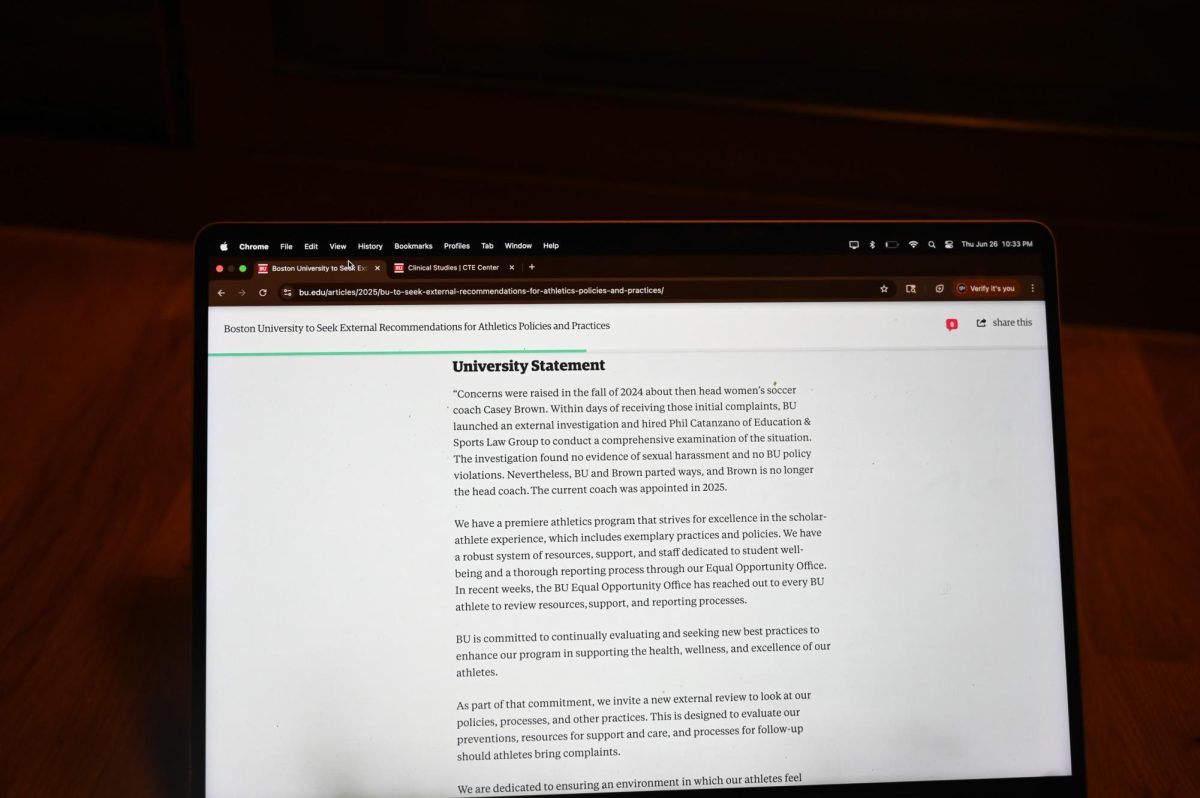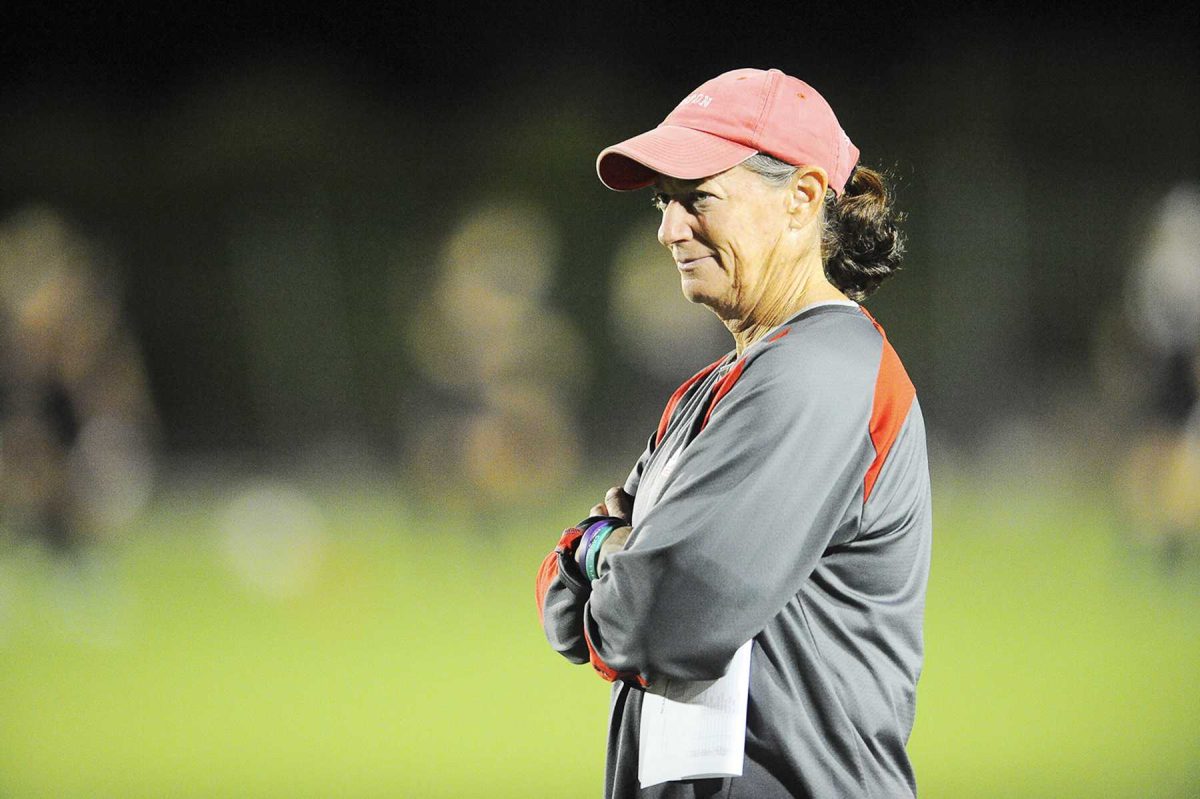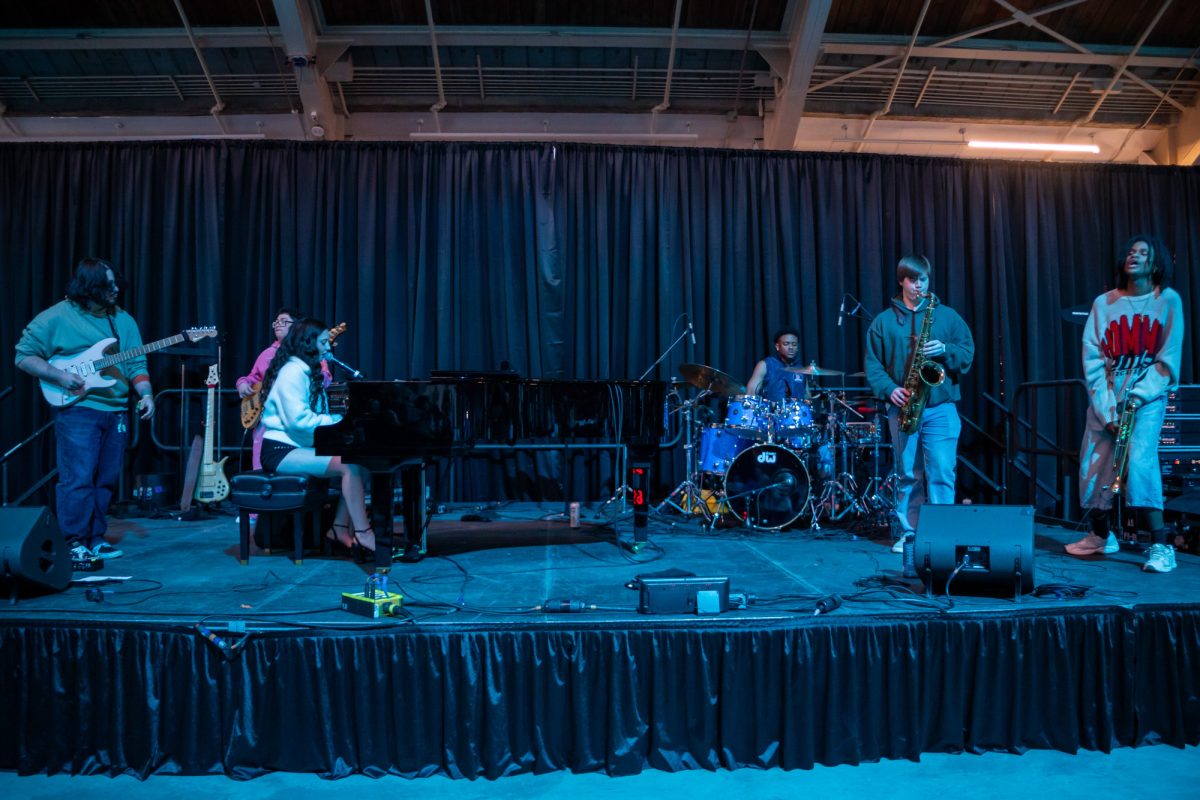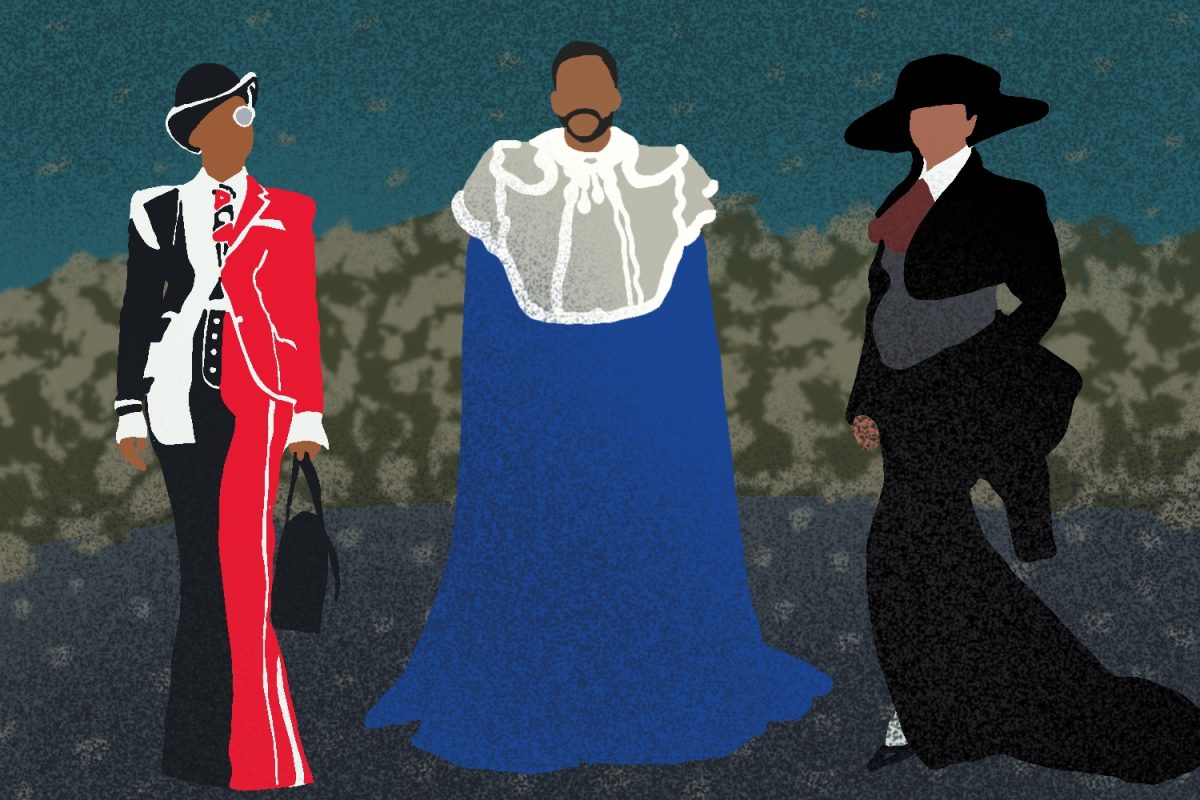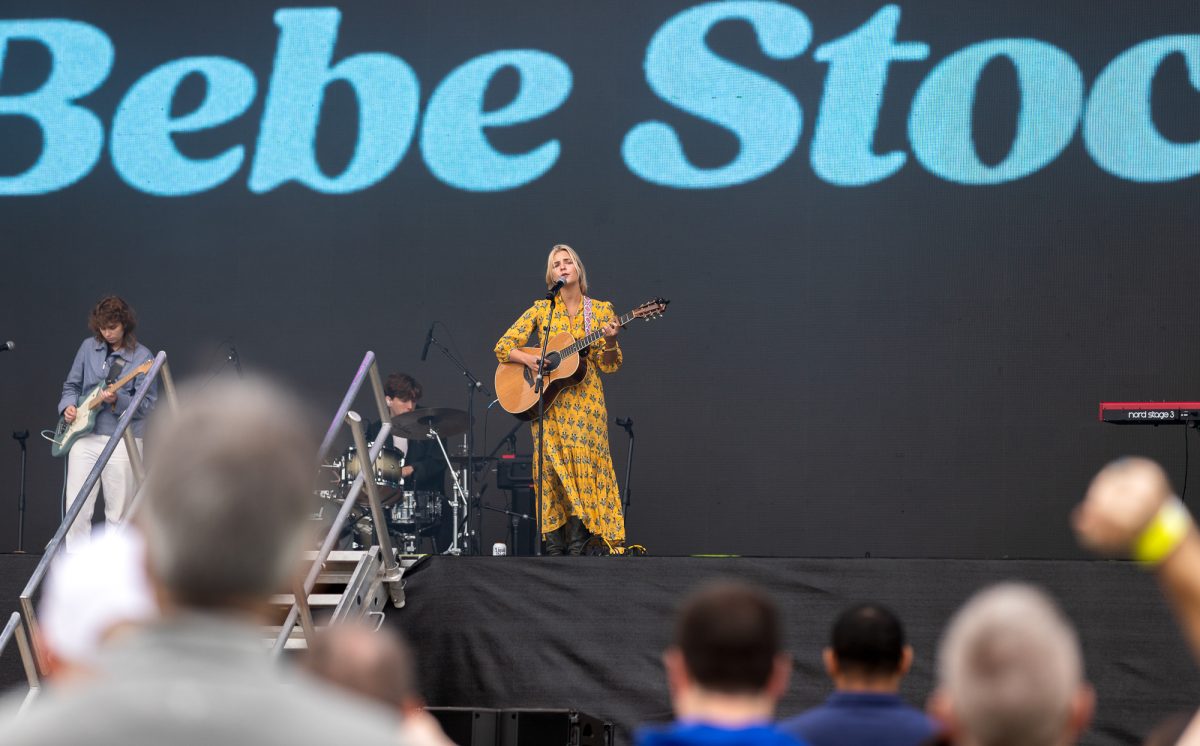Boston University students looking for a study break from upcoming finals found it Friday afternoon with a master belly dancing class in Boston University’s Dance Theatre located in the Fitness and Recreation Center.
Sponsored by the Dance Theatre Group, the session allowed BU students as well as the general public an opportunity to learn about the form of dance free of charge.
Master belly dancers Anita-Cristina Calcaterra and Karen Uminski, two members of The Goddess Dancing, taught a group of more than 20 students different movements in American belly dancing and incorporated its history throughout the class.
Playing an assortment of music that ranged from traditional to modern Middle Eastern, Calcaterra and Uminski taught students basic belly dancing stances, floor movements and warm-up techniques, including goddess stretching, which taught students to take poses of goddesses of the past.
Calcaterra said there are many advantages to people becoming involved with belly dancing.
“It is very beneficial for internal organ health, as it massages them,” she said. “It’s isotonic in that the extraction and expansion strengthens core muscles in areas such as the belly, chest and pelvis.
“What’s so wonderful about belly dancing is that it’s gentle enough for any age, any fitness ability,” she continued. “It is also excellent for prenatal and postnatal exercise.”
Micki Taylor-Pinney, the Department of Physical Education, Recreation and Dance Coordinator, said she was happy about the turnout and that students were taking advantage of the class.
“We all benefit from physical as well as mental activity,” she said, “and I think this is a great way of doing that. I hope the students learn about a dance that has historical and cultural relevance.”
Taylor-Pinney said every semester the Dance Theatre Group sponsors one master dance class for the BU community and public at no cost, with a master instructor from outside the university teaching his or her specialty dance.
“Last semester we had a West African dance class,” she said. “We try to introduce students to an empowering form of dance and students appreciate it because it exposes them not only to the dance, but to its history as well.”
Dance Theatre Group officers said they were pleased with how Calcaterra and Uminski ran the class and incorporated belly dancing’s history, which Uminski said originated in India.
“It went really well,” Sargent College of Health and Rehabilitation Sciences senior and Dance Theatre Group President Sabrina Carrié said. “I’m happy they brought two teachers this time, so one could focus on teaching and the other could go around helping students.”
Dance Theatre Group Treasurer Ali Mendelson said she was pleased that more students not associated with Dance Theatre Group decided to attend.
“When we have events like this the majority are usually our members,” the Sargent junior said. “It was nice to be able to get people who may be in different dance groups together, because it promotes Dance Theatre Group.”
Uminski said her group is geared toward dancers of all levels, but added that participants with past experience often inspire and teach her in return.
“It’s always a pleasure to teach people who know where their hips are,” she said. “We learn from them just as much as they learn from us.”
New students called the session exciting and energizing.
“It was so enjoyable,” College of General Studies sophomore Zan Jabara said. “It was fun, sexy and an insightful and empowering two hours.
“Belly dancing is always something that sounded interesting,” she continued, “but I never really got to try it. This was a good opportunity to learn a lot of the basic moves, all in one session.”
Students said they were happy to learn more about belly dancing through Calcaterra and Uminski’s teaching methods.
“It was amazing to book them,” College of Communication senior Karesia Batan said. “It was interesting to learn that there are so many different ways to move parts of your abdomen and hips.”
Calcaterra said students interested in belly dancing can look forward to an eight-week non-credit course for the spring semester.
“We would like people to view belly dancing as a modern dance form and to use it in their regular dancing,” she said. “We’re trying to raise it out of its folklore roots and make it accessible to everyone.”

